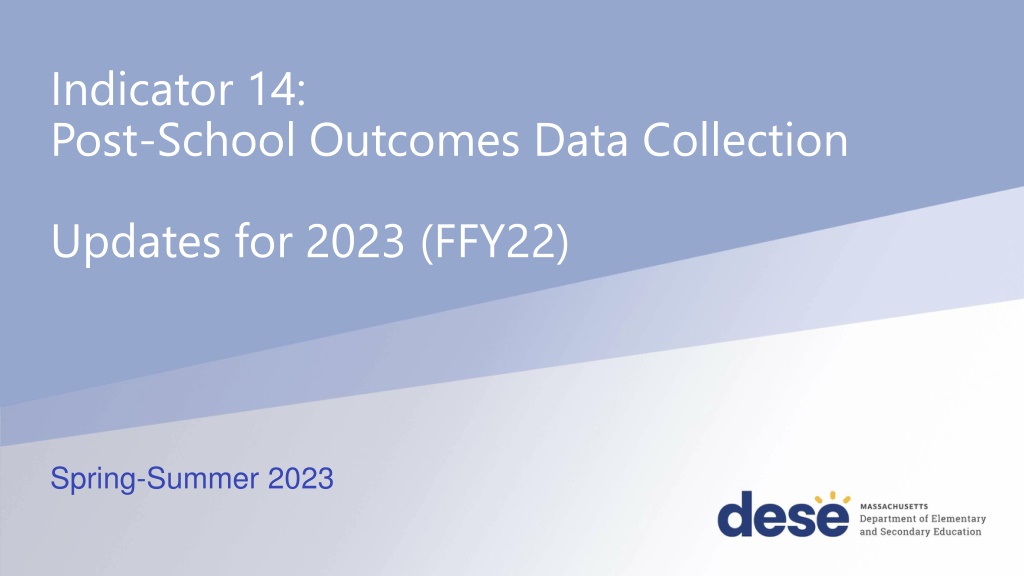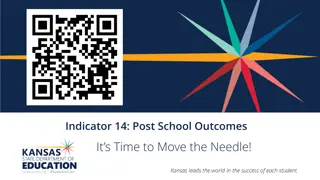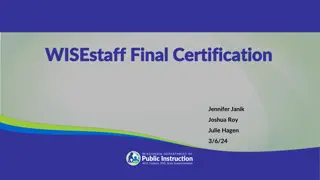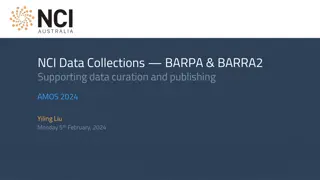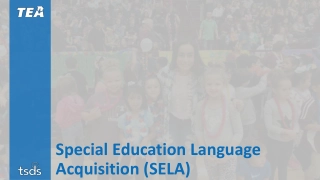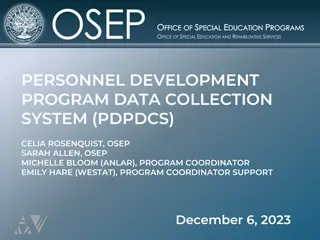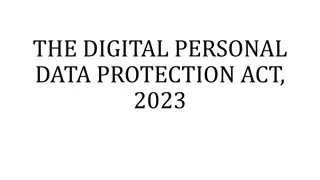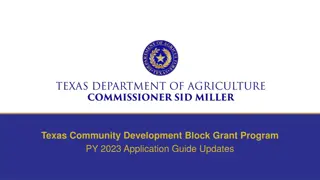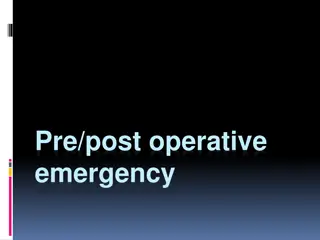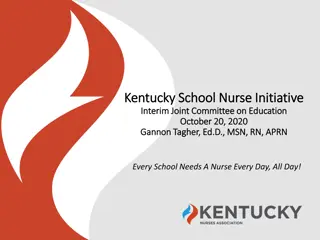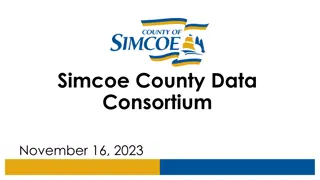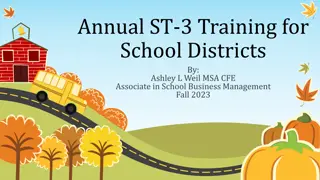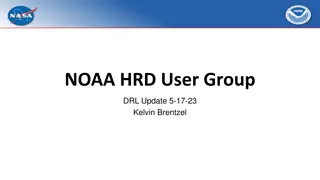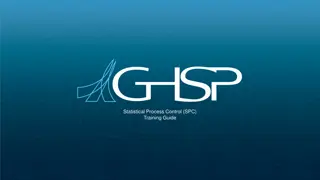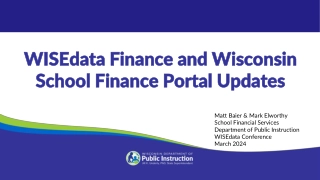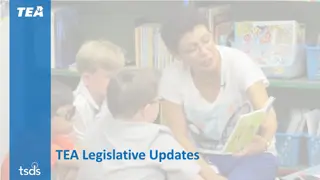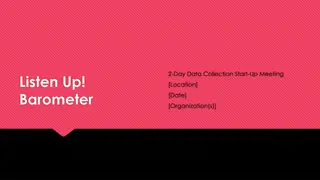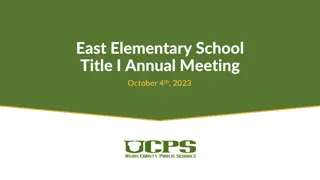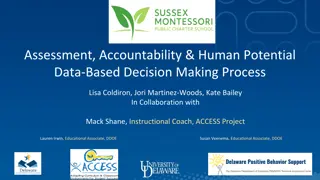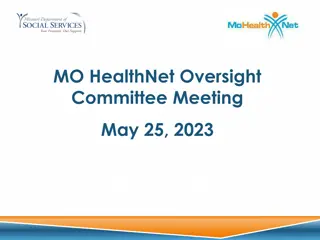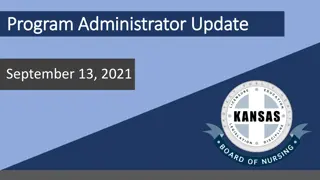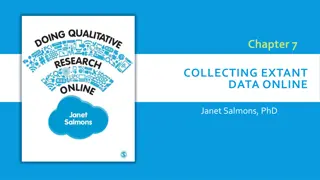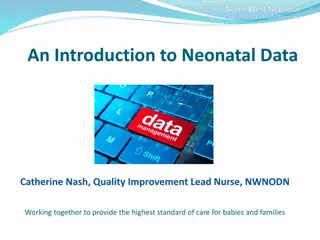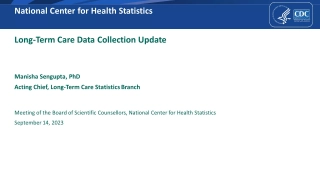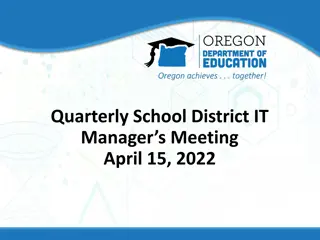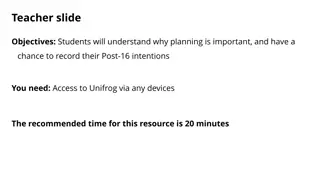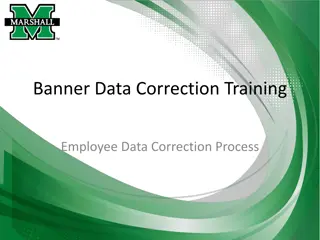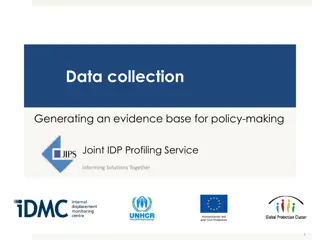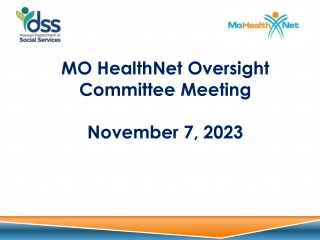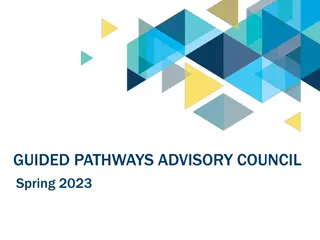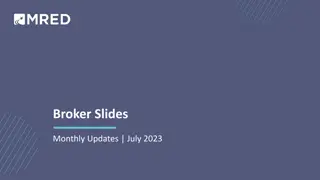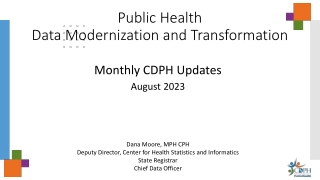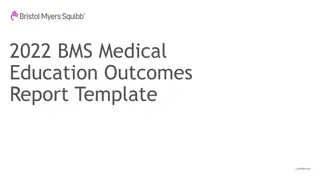Post-School Outcomes Data Collection Updates for 2023
This information provides details on Indicator 14 data collection for post-school outcomes in 2023, focusing on assessing the success of educational efforts for students with IEPs one year after leaving high school. It covers the importance of Indicator 14, what it entails, changes for 2023 and beyond, and the process of data collection using an online survey in multiple languages.
Download Presentation

Please find below an Image/Link to download the presentation.
The content on the website is provided AS IS for your information and personal use only. It may not be sold, licensed, or shared on other websites without obtaining consent from the author. Download presentation by click this link. If you encounter any issues during the download, it is possible that the publisher has removed the file from their server.
E N D
Presentation Transcript
Indicator 14: Post-School Outcomes Data Collection Updates for 2023 (FFY22) Spring-Summer 2023 1
01 Overview of Indicator 14 02How to Prepare for the Online Survey 03How to Administer the Online Survey Agenda 04 A Couple of Reminders 05 Wrap-up 2 2
01 Overview of Indicator 14 3 3
Why is Indicator 14 important? The focus of Pre-K Age 22 education in Massachusetts is to prepare our students for success in their adult lives. Using the Indicator 14 survey, you will follow up with your former students with IEPs one year after they leave high school to find out whether they have been engaged in employment and/or further education or training. This summative information gives us an indication of the success of our educational efforts at the state and local level. 4
What is Indicator 14? At the district and state leveI, Indicator 14 measures the percent of youth who are no longer in secondary school, had IEPs in effect at the time they left school, and within one year of leaving secondary school are: 1. Enrolled in higher education, 2. Competitively employed, 3. In some other postsecondary education or training program, or 4. In some other employment. 5
Changes for 2023 and Beyond As a reminder, the Cohort Model for Indicator 14 collection ended in 2022. DESE has moved to a census model Every district, every year Provide a closer alignment to Indicators 1 and 2 More comprehensive picture of outcomes for our students with disabilities across the entire state 6
How is Indicator 14 data collected? Your district will use an online survey in English, Spanish, Haitian Creole, Vietnamese, Chinese (simplified), or Portuguese to collect information from your former students with IEPs. https://bit.ly/WorkSchoolSurvey2023 This can be done in one of two ways: District staff complete the online survey with the former student OR The former student will complete the survey themselves. Note: Since the last time your district collected Indicator 14 data, one new question has been added. Some questions have been modified. 7
When is Indicator 14 data due? All data is due and surveys must be completed by: September 15, 2023. All online surveys must be complete by this date. Please ensure that all surveys are completed submitted online by September 15th, since we must meet federal reporting requirements including timelines. 8
02 How to Prepare for the Online Survey 9 9
Indicator 14: Getting Started Identify your Indicator 14 survey team and plan how you will train and orient them. Review all of the documents that will be emailed to your district s special education administrator in May. To collect data effectively, your team will need to know: What is an exiter? Who are your district s exiters, and how will you contact them? How will you administer the survey and submit data? 10
What is an exiter? Exiters are students with IEPs who during the 2021-2022 school year: Graduated from high school, OR Aged out of special education, with or without a certificate of attainment, OR Dropped out of high school, i.e., didn t return for the 2021-2022 school year, even though they had been expected to return. (Don t forget to include students who were in Out-of-District Placements.) 11
Who are your districts exiters? DESE will provide each district with an exiter list generated using the data your district submitted to SIMS in 2022. Each district s list is available in the DESE Security Portal. Once logged in, browse to Dropbox Central and then to Indicator 14. Download and save your district s SIMS exiter file securely. 12
Confirm Your Exiter List Using your district s records and the Indicator 14 Student Contact Information Sheets your district completed last school year, carefully review the list to verify it is correct and complete. Per the Step-by-Step instructions your district administrator will recieve, create an Excel spreadsheet on which you list your district name and org code, as well as the SASID, name, and birthdate for each discrepant record. Indicate whether you are adding the individual to the official list of exiters, or whether you are removing them. Enter the reason for adding or removing the individual. Upload this spreadsheet to the Indicator 14 dropbox on the DESE Security Portal. Contact Patrick Cerio at PIAR (piarmass14@potsdam.edu) to request that exiters be added or removed. Patrick has DESE clearance to discuss individual exiter information with school staff. 13
Compile Exiters Contact Information Onceall 2021-2022 exiters have been identified: Use the Student Contact Information Forms that were completed by students in Spring 2022 to compile contact information If you don t have the Student Contact Information Forms for any exiters, there is no need to worry. You can review exiters emergency contact forms and other information in their cumulative records. 14
How to Administer the Online Survey 03 15 15
Plan Ahead Make a plan to contact your exiters so that all surveys are completed online at https://bit.ly/WorkSchoolSurvey2023by September 15th, 2023. Will you use email, phone calls, mail, social media? How often will you contact exiters? Which district staff will reach out to your exiters? Your district s response rates will be higher if exiters are contacted by school staff whom they know and trust. 16
Please help ensure every survey count remind staff to: Click I work for the district and enter their name and enter the former student s SASID. 17
Plan Your Outreach The procedure you use is up to you. We suggest that you: Mail and/or email your exiters shortly before you plan to start calling. Allow time to complete the survey online. Consider sending a follow-up letter after a week or two to encourage completing the survey online. If more than a month has passed from the initial mailing, consider sending additional reminders that staff will be trying to contact them soon. Please make at leastthree attempts to reach your exiters. Contact = Phone calls or emails, Letters or texts all count as contact attempts. When calling, try different days of the week and different times of day. Districts with high response rates tend to attempt outreach to exiters more than three times. 18
How will you know whether students have completed the online survey? PIAR staff will send regular emails to your Indicator 14 district contact (usually the special education administrator), to let you know which exiters have completed the survey. If you want someone other than your district s special education administrator to receive these updates, please email the correct contact information to PIAR staff person Patrick Cerio, piarmass14@potsdam.edu, cc d to Greg Tobey, Gregory.Tobey@mass.gov. 19
How will you know..? continued Email updates from PIAR will be sent to each district about every two weeks through the summer until early August, and then weekly thereafter. Let PIAR staff person Patrick Cerio, piarmass14@potsdam.edu, know if you need additional information about who has completed surveys or have other questions. 20
04 A Couple of Reminders 21 21
Review the definition of Competitive Employment Critical characteristics of Competitive Employment: Youth have worked for pay at or above the minimum wage: but not less than the customary wage with the same level of benefits that the employer provides for the same or similar work performed by individuals who are not disabled in the competitive labor market on a full-time or part-time basis in a setting with others who are nondisabled/in an integrated setting includes military employment 22
Improving Response Rates Benefits of increasing response rates To understand the experience of all types of former students with disabilities (SWD), we need to hear from all types of former SWD proportionately. Higher response rates generally provide a more accurate picture of the actual engagement rates of SWD after high school. The Statewide and your District reports will be more complete With better survey data, better decisions can be made. 23
Improving Response Rates Continued Use interviewers whom former students know and trust. Have on hand information about helpful local resources. The information you provide can help your former students to connect with programs and services in their community that can assist them in attaining their goals. Sharing these kinds of resources will improve the reputation of the survey and may encourage other exiters to contact you to complete the survey. 24
Improving Response Ratescontinued Consider publicizing the survey effort. Make plans to provide assistive technology, translation, or other support to help ensure that exiters who need them can participate in the survey. Plan strategically the times when staff will try to contact former students and revise times as needed to reach your former students with fewer attempts. 25
Manchester Essex Allison Brown Collins Director of Student Services Before exiting, confirm contact information with Seniors Initial outreach with an email and follow up with a call Contact family to ask for assistance Personal connections with former students 26
Northern Berkshire Kristin Steiner Director of Student Services, McCann Tech. Developed a set of internal procedures Explain the importance of the survey to Seniors before leaving Multiple contact points Staff familiar with former students - Contacted student, then parent Used Student Contact Information Sheet to track information and record survey answers 27
Somerville Konstantina Kalogridis Special Education Department Head Inform exiters before leaving they will be contacted- Explain the importance of the survey. Created internal tracking system and student information collection system. Students may request a certain individual (case manager, adjustment counselor, guidance counselor) contact them. Multiple ways of outreach and various times of day. Maintain an ongoing relationship with the family. 28
Lowell Frank Vicente Director of Special Education Multiple contact sources Staff familiar with former students stipend offered for staff Multiple attempts (phone calls and home visits) Persistence is key 29
05 Wrap-up 30 30
Whom should districts contact for Indicator 14 assistance? For questions about the online survey, e.g., how to access it or whether your district s exiters have completed the survey yet, please contact PIAR representative Patrick Cerio at piarmass14@potsdam.edu, 888- 419-2697, or 315-267-2743. Please know that Patrick has clearance to discuss individual exiter information with school staff, should schools wish to know whether specific exiters have responded to the survey. For all other Indicator 14 questions, please contact Greg Tobey, Greg.Tobey@mass.gov or 781-338-3378. 31
Thank You Robert Shepherd, Survey Coordinator 315-267-2718 shephers@potsdam.edu 32 32
